new posts in all blogs
Viewing: Blog Posts Tagged with: Portugal, Most Recent at Top [Help]
Results 1 - 20 of 20
How to use this Page
You are viewing the most recent posts tagged with the words: Portugal in the JacketFlap blog reader. What is a tag? Think of a tag as a keyword or category label. Tags can both help you find posts on JacketFlap.com as well as provide an easy way for you to "remember" and classify posts for later recall. Try adding a tag yourself by clicking "Add a tag" below a post's header. Scroll down through the list of Recent Posts in the left column and click on a post title that sounds interesting. You can view all posts from a specific blog by clicking the Blog name in the right column, or you can click a 'More Posts from this Blog' link in any individual post.

By: Jerry Beck,
on 11/8/2016
Blog:
Cartoon Brew
(
Login to Add to MyJacketFlap)
JacketFlap tags:
CGI,
Feature Film,
Poland,
Portugal,
Platige Image,
Mulan,
Imaginew,
Jarosław Sawko,
Philip LaZebnik,
Pochahontas,
Add a tag
We've got a first-look at a promising feature from a top Polish animation studio.
The post Platige Image Releases Teaser For New Feature ‘Fatima’ appeared first on Cartoon Brew.

By: Jerry Beck,
on 9/27/2016
Blog:
Cartoon Brew
(
Login to Add to MyJacketFlap)
JacketFlap tags:
Events,
Spain,
Festivals,
Portugal,
Wesley Louis,
Guillermo GarcÃa CarsÃ,
Sergio Pablos,
Sam Taylor,
The Line,
Abi Feijo,
Eleanor Coleman,
Klaus,
Nicolas Schmerkin,
Eric Goossens,
3D Wire,
Adriano Schmid,
Alexandra Ramires,
André Luis,
Andrea Basílio,
Enrique Vazquez,
Humberto Santana,
José Miguel Ribeiro,
Laura Gonçalves,
Luce Grosjean,
Nikotxan,
Nuno Beato,
Paolo Polesello,
Rebeca Núñez,
Add a tag
3D Wire is a major Spanish animation event that highlights the vitality of the country's animation, video game, and new media industries.
The post 150 Animation Projects and High-Profile International Guests Set for Spain’s 3D Wire appeared first on Cartoon Brew.
 |
From my Portugal sketchbook:
Sardines Galore! |
Hello, everyone! Here we are at the next stage of my Portugal journey. I had meant to post this entry much earlier, but the recent tragic events in Paris and the rest of the world drove me into retreat-mode. I have been sad.
Paris has always been special for me, as I believe it must be for a lot of people, and my heart and mind are very much with the people of France right now. Which also means I was initially reluctant to write a blog post about European travel. It felt frivolous. Then I was reminded of something a good friend said at our last writer's group meeting: keep traveling. Don't give in to fear. Support the small businesses and people of the world with our tourist dollars and by appreciating all the goodwill travel has to offer. It's a great attitude, and one that encourages me to keep dreaming, keep planning, and keep my suitcase handy. So in that spirit we'll keep going through the wonderful land of Portugal.
One quick aside before we go to the cork forests, though: before leaving home I was so busy with my day-job and all the rest of my life I didn't have the chance to get to an art supply store to buy a Stillman and Birn sketchbook, the brand I took to Taiwan. Instead, I had to dip into my trusty storage container of new, but unused, sketchbooks that I have either bought on impulse because they were on sale, or had been gifted over the years. (I promise this isn't hoarding, just "saving things for a rainy day." And this was the rainy day.)
The one I chose was a 5 1/4" x 8 1/4" Global Art Travelogue Handbook. I had been wanting to try out a horizontal format for awhile, and this seemed like the perfect opportunity. I used my now-favorite Faber-Castell watercolor pencils, but instead of a waterbrush, I took a travel watercolor brush--it's just like a regular paint brush, but part of the handle comes off so you can tuck the bristle end into it to keep everything a) dry, and b) compact. To be honest, I thought the brush was a little over-priced and I'm still not sure what I think of it. On the other hand, after reading several on-line negative reviews of the Handbook, I have to say I totally disagree with the nay-sayers--it's a nice little book! The paper is good quality, I liked the way it stayed open on a table or my lap even though it was stitch-bound rather than wire-bound, and once I closed it and secured it with the built-in elastic band, any pages that had "curled" while I was painting them returned to their original shape and stayed that way. So, I like Handbooks a lot and recommend them as good travel companions. They come in a variety of sizes, and the one I took was just right for keeping in my purse all day.
So with that covered . . . northwards we go and on to: Arraiolos! Stopping first for Portugal's famed cork trees:
Aren't they sketch-worthy? Too bad I was in a hurry at the time and could only snap a few pics. I was particularly surprised to see some of the trees stripped down to their bright red "naked" trunks (I don't seem to have any photos of them, sorry). Later on I learned that the cork bark must be harvested from the trees at regular intervals to keep them alive. Good excuse to drink more wine--every time you open a bottle you're saving a tree, LOL! I was also surprised to discover how many uses the Portuguese have for cork, from making shoes and handbags, to covers for journals and i-phones, to . . . well, you name it, you can find it made out of cork. (And new cork shoes might make you a much wiser steward of the planet than too many bottles of wine in the long run.)

After viewing various parts of the forest I then saw a sign saying that just up ahead would be an entire maze of prehistoric monoliths. I just HAD to see the monoliths. I mean, they were prehistoric! The only trouble was the signage didn't say exactly where, or how far, so after about ten miles of driving down endless dirt roads searching we gave up and headed back for the toll road and our planned destination of Arraiolos.
We chose Arraiolos for its famous carpets. I had my heart set on something small and pretty for my entryway back home, and as I read to my husband from the guidebook: "Everywhere you look there are people making or selling carpets in this charming town, even from their doorways." Okay. Doorways. Yes, I see them. But they are closed. Charming. Yep. Very pretty town. But the carpets . . . um, where did you say they were?
Unfortunately, and very much like hunting down the monoliths, we couldn't find a single thread or scrap or even a human being. The town was so quiet I couldn't even hear someone vacuuming a carpet! There were NO carpets. But there was a castle:
And a view:
And in that view there was a grocery store. Except when we got down there, it was closed.
We peered through the windows and saw the owners eating their lunch. It looked delicious, but, they shook their heads: no, you can't come in. Okay. No carpets, no lunch.
In search of some food, we then found a mega-mall that we were sure would have a restaurant. Hahahahaha. Lots of stereo equipment, garden furniture, and children's bedding, but no food to be had. Certain we would pass out around now, we managed to drive to another beautiful mountain town, Santarem (a city, actually) and there we found a little hole-in-the-wall of a bar where they made us a wonderful feast of Super Bock, boiled egg and salad sandwiches, coffee, and cake. Which meant we now had the strength get to the eastern coastal town of Nazaré and a beautiful modern hilltop hotel for the night. We could see both the swimming pool and the sea from our room:The next day we explored the village (where everything was wonderfully open!) and I bought one of my few souvenirs: a lacy, embroidered tablecloth. It's not a carpet, but it's sweet and will forever remind me of a happy day.
The morning ended with more sandwiches and more Super Bock on the beach and a view of the fishing boats:
And then we were off to the surf town of Ereceira, of which I will write much sooner than I have these other posts. In the meantime, may you be safe, may you be inspired to go far and wide, and Let There Be Peace on Earth. Thank you for visiting and to my US readers: Happy Thanksgiving!
From my Portugal sketchbook: Roman Temple of Diana
ruins in Évora!
Hello, everyone. Anybody signed up for National Novel Writing Month 2015? Me! (Much against my better judgment.) So far, so good--I'm actually enjoying myself, making me wonder what's wrong, LOL. The title of my WIP is The Calling, and I have no idea what it's about, which is fine--writing for the sheer pleasure of writing is really what #Nanowrimo is all about, don't you think?
But before I get back to today's word quota I wanted to take some time to continue sharing my Portugal journey, so here goes:
I ended my last post in the seaside town of Quarteira. From there we headed north and inland to our chosen destination of Évora, billed in our guidebook as a walled medieval World Heritage City and the home to an ancient university. Driving there we went through what our guidebook described as "the golden plains of the Alentejo" (very golden, very desolate, and very beautiful):
passing more castles on our way:

Next step was lugging our suitcases toward the local posada, a lovely old former convent now turned into a state-run luxury hotel with, naturally, luxury prices. Like, um, really, really expensive. We weren't sure we wanted to spend so much money, so suitcases still in tow, we headed down the cobbled lanes to where we thought there might be some place to stay, and found this adorable little family-run inn:
I loved the old-world charm (as well as the old-world pricing). After unpacking and freshening up (listening to our neighbors' rooster while they worked in the kitchen and watched a Portuguese soap opera--noisy. but homey and real) we went to see the sights and have a late lunch in the square:
(
A shot of our outdoor restaurant under the umbrellas. As usual, I don't know who these people are in the foreground--I tend to just take photos without thinking too much about where I am, and end up with all kinds of strangers tagging along.)
After traipsing down more hidden lanes and admiring the architecture, we thought it was time to go check on our car and possibly put more money in the machine. The parking was free at night, but we wanted to be sure we'd paid enough until the cut-off time. We got to our car, and lo and behold, a parking ticket! Bummer! We couldn't read what it said, but I was able to decipher something about the price being 300-500 Euros which made me want to faint on the spot. The police station was right around the corner so we went there with our paper showing we had paid, the time hadn't run out, so why? What? How could they do this to us?
The police officer we approached was very nice but he didn't speak English and couldn't explain anything other than saying we hadn't paid. But we did! Honestly, officer, we have the proof! He smiled, shrugged, and told us as best he could we'd have to go to the traffic department in the morning. Ugh.
We then spent the rest of the afternoon trying to find where that building would be so we could be there nice and early. We walked, and walked, and walked . . .
No, this wasn't it . . .
Nor these places either . . .
Nope. Couldn't find it. Eventually we decided to just go back to our hotel and collapse. But after about five minutes inside our room my husband got all antsy and said he wanted to move the car to outside the city walls. On his own. He then promptly disappeared, leaving me to fret and invent terrible scenarios of ending up in the Évora dungeons for non-payment of parking fines. Eventually I got so carried away imagining horrible outcomes I think we were being burned at the stake by the time my husband returned and said the car was safely in a public zone outside the city walls. He thought.
Doing our best to put it all behind us, I concentrated on the beauty of the evening:
The cathedral view from our window:
Followed by one of our best meals at the luxury hotel for dinner. If we couldn't stay there, we could at least have a wonderful meal:
The chef prepared a special vegetarian leek, cheese, and potato dish for us, complete with a huge selection of breads and olives, Portuguese wine, and of course, a sampling of Port to finish the meal with dessert. Delish! We were the last people to leave, hence the empty tables.
Stepping outside, we came right to this amazing sight: the ruined temple floodlit against the dark sky.
The next day after chocolate croissants, fresh orange juice and lattes for breakfast, we set out to deal with THE TICKET. Within minutes we found the traffic department offices set within a gorgeous eighteenth-century building that could easily have doubled as a museum (probably why we had walked past it a dozen times without realizing what it was), and showed the receptionist our ticket. She didn't speak English, so she sent us to a colleague, and guess what: he laughed and said, "Oh, this is only a warning. You were in a government parking spot. It's okay. Just don't park there in the future. Have a nice day!" Whew. No wonder the police department had been so easy to find--we'd poached one of their own spaces. On that high note we decided to leave town while we could. My husband went to get the car, leaving me to wait with our suitcases and to people-watch outside the cathedral.
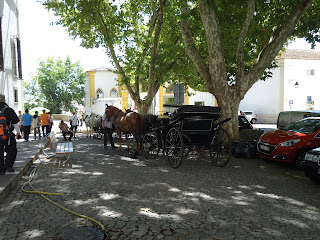
 |
The main entrance of
Se Cathedral |
For some time I have been wanting to write about the wonderful buildings we see each time we go to Braga. The Sé Cathedral is probably good to start with for two reasons: The personal reason is that my husband, who loves black and white photography, is entranced with the stone churches of Spain and Portugal, and this building is a knock-out. The more serious reason is that it is the seat of the Archdiocese of Braga and one of the oldest cathedrals in Portugal; some say
the oldest. As such, it shows the many architectural features seen all over the city: The entrance facade is Romanesque (notice the arches); the bell towers are Baroque, (intricately ornamental). And inside, many areas are tiled with the distinctive Azulejo blue and white tiles one sees on walls, both exterior and interior, all over Portugal.
Braga is a city of churches, given its long history as the the religious capital of Portugal. But you see the interweaving of Roman and Baroque in many of the churches, and also many of the mansions and museums. One example is the old Archbishop's Palace, where the Jardim de Santa Barbara (Santa Barbara Garden) is nestled in a back square of the former palace.
 |
You can see how the word "Palace"
applies here. |
 |
| Add caption |
The new Archbishop's palace is located elsewhere and this crenelated building now houses archived material for the University of Minho. But step inside the entrance and you can see the true beauty of Azulejos:

So many insides of churches had scenes in Azulejos, too. And many an exterior is decorated in blue and white tiles. While ceramic tiles were used all over Europe and were inspired by Moorish and Egyptian, the way Azulejos are used in Portugal have become an art form. In addition, many walls in Braga often display solid or geometrically patterned tiles as well:
All the beautiful colors and textures add to the distinctive quality to each building. No two buildings are exactly alike. Some have arched arched windows; others arched doorways. Some have painted walls, others have tiled walls. Sometimes the grill work of balconies is black; other times it's painted in bright colors. I could have taken endless pictures. You've actually been spared an extensive photo album of shots! :-)
Back to the churches: You could call Braga a city of churches. As the religious capital of Portugal, there are over thirty-to-thirty-five churches, in addition to the Sé Cathedral, and all quite distinctive. There is Igreja dos Congregados on the one side of Avenida Central bordering Praça República (Republican Square (two views below).
 |
Seen from the Arcada, which fronts
one end of Republican Square. |
 |
Seen from across the triangular park
that starts at the Arcade and ends in
Largo Senhora Branca. |
There was also Igreja a Senhora Branca (Church of Our Lady in White) just across from our hotel (Hotel Senhora a Branca). A sign forbade picture taking inside, but the chapel was lovely, tiled in two shades of yellow with the main altar ceiling painted blue. The tiled facade could be photographed, and above the entrance, a statue of "Our Lady" in an alcove was lit by night: Here are some pictures by both day and night:
On this particular trip (June, 2015), we were there during the full moon, which added a veil of mystery at night.
There were other churches of note: Bon Jesus, four miles out of town, up in the hills, which we did see last fall while attending a photography exhibit. (Our pictures were mainly of the exhibit, but here is a plaque on one wall.) A small, baroque church on a street behind the Arcade, Igreja da Terceira Ordem Regular de São Francisco (Church of the Third Regular Order of Saint Francis). And inside the arcade is a small church
, Igreja Paroquial de Nossa Senhora da Lapa (Our Lady of Lapa).  |
If you look closely, you'll
see more beautiful Azulejos. |
Then there were the museums. I'll concentrate on two that captured our attention. On our first trip, we went to the Museu da Imagem - The Image Museum, that specializes in photography exhibits. I had read of this museum in a travel article posted in the Huffington Post and was particularly interested, because my husband does black-and-white photography. Online, we made friends with the director, Rui Prata, and when we visited, we got acquainted with him and this beautiful museum. It's partly housed in an old tower of the original castle and an adjoining building that looks out on the street. Inside are current exhibits and historical photographs of Braga, and Rui Prata was generous with his time, telling us much about the history of Braga. He himself is a photographer, a curator of exhibits, and has recently retired from director of the museum to move to Finland from where he still curates exhibits all over Europe.
 |
| Museum entrance - the red building. |
 |
| Street view from inside the door. |
 |
My husband debating what
to look at first. You can see
the complexity of the layout. |
 |
| Just one of the sections of photos. |
 |
This particular exhibit was
about the 1974
Carnation Revolution |
 |
Later Rui treated us to dinner
and introduced us to some fine
Portuguese wines. |
We'd often heard about the Museu dos Biscainhos, a historical mansion, originally built in the early 17th century by a noble family. Inside its many rooms are collections of 17th and 18th century European and Asian furniture, ceramics, porcelain, glass, paintings, etc. The baroque palace or manor had its own chapel, servant quarters, carriage house. But it was the 18th century baroque garden with statues, fountains, pathways between hedges and flower beds, and trees that blew me away, and I focus my pictures on its beauty. 9One tree is a giant tulip poplar, sent from Virginia to the nobleman's family 2 centuries ago.)
A 200-year-old tulip poplar and me.
Did I mention it was huge?
Moments like this give you a sense of your size in the scheme of things.
Last, but not lease, I'd like to mention our good fortune to meet Inȇs Barbosa on our first and subsequent visits. Inȇs is getting her Masters at University of Minho and was interning at the hotel where we stay (Hotel Senhora a Branca) until just recently, when she went to work for Lufthansa in Porto. She patiently answered innumerable questions about Braga, about Portugal, about Fado, etc. On our last visit she told us about some of the Folklorico groups in Braga. The group she belongs to were to perform in Santiago de Compostela, Galicia, the day after we left Braga.
 |
| In Folklorico costume. |
She kindly sent me a video of the group performing in Braga, and I'm passing it on for you to enjoy: Just click
HERE.How about you? Do you belong to a heritage or historical interest group of some kind? Do you love historical buildings and gardens?


By:
Elizabeth Varadan,
on 6/24/2015
Blog:
Elizabeth Varadan's Fourth Wish
(
Login to Add to MyJacketFlap)
JacketFlap tags:
opera,
Blues,
tapas,
Portugal,
Fado,
Braga,
Fadista,
Mercado das Tapas,
Portuguese guitar,
Add a tag
One of the great traditions of Portugal is the unique music called t
Fado. I first heard
Fado two years ago in Galicia, when Maria do Ceo sang at a restaurant in a
casa rural. (I blogged about her singing
HERE and
HERE.)
My next Fado discovery was the great
Fadista, Marisa da Luz, in Braga, Portugal.

By the time my husband and I went to Braga last year to do research on a book I am writing, we were both hooked on Fado, and we especially wanted to find a place where we could hear it. We lucked out! Mercado das Tapas offers
Fado every Thursday evening and a wonderful selection of tapas, as well as that great potato and kale soup called
Caldo Verde.
At Mercado das Tapas, various
Fadistas perform, but when we went last year we were fortunate to hear Marisa da Luz. We liked her so much that, when we knew we were going again early this month, we requested her. There are many things that make her such a good
Fadista: To begin with, she has a beautiful voice with quite a range. But she also pours such feeling into her songs, they wring your heart.
There are cheerful songs in
Fado, but the majority of songs deal with life, one's soul, fate.
Fado has been called the Portuguese equivalent of American Blues, and to some extent, that's true. But to me the melodies are more complex and take one by surprise. Some tell a story. Some are philosophical. Some simply express the sadness of loss at a high level of poetry. Some of the lyrics are taken, in fact, from the poetry of one of Portugal's greatest and most mystical poets, Fernando Pessoa. Normally a
Fadista is accompanied by two or three musicians. One or two will play guitar, and the remaining one will play a
Portuguese guitar, which sounds very much like a mandolin.
 |
| Add caption |
 |
| Add caption |
Fado is an art form like no other, and Marisa da Luz's voice and delivery rise to the demands of it. We predict that she is a rising star
Fado lovers will hear of more and more.
 |
| Elegant and dramatic |
She was the main singer of the evening, but three men took turns singing Fado, too, as many
Fadistas are men, and this seems to be tradition.
 |
| Beautiful voice. |
 |
| Great feeling |
 |
| The humorous one. |
As it turned out, it was Marisa da Luz's birthday, and she was celebrating it with her friends and family. Graciously she shared some champagne with us, and she let us take pictures of the party, as well as a couple of pictures with them! And with her! A very cordial, down to earth lady.
 |
The woman behind me on your
right is one of the owners. |
 |
| She gave us champagne! |
 |
A wonderful group of people as
you can see.
|
 |
| I was really honored. |
Thank you, Marisa da Luz, for an inspiring evening full of wonderful song.
Next week: Some of our favorite places in Braga, and a wonderful tour guide.
Meanwhile, what is your favorite music to listen to? Have you heard
Fado? If so, do you like it?

We don't often post trailers for animated shorts, but the 2-minute teaser for "Poet Anderson: The Dream Walker" has attracted a lot of attention over the past few days, and deservedly so.
 |
One of the most interesting bookshops ever: Centésima Página
on Avenida Central in Braga. That's me, there, wishing I
could read Portuguese, a beautiful but challenging language. |
 |
| A delightful café bar called Copa. Again, in Braga, Portugal. |
Hi, Friends,
I have not been posting because I've been working hard at finishing my book. Almost there, too. I have two more chapters that I'm determined to finish this week before we head home.
Next week I'll be posting again, and when I take writing breaks, I'll be visiting and reading your blogs, as so many of them inspire me. Meanwhile, I leave you with two pictures above from Braga, Portugal. Once we are home, I'll be writing more about that trip as well as bits and pieces about Galicia.
Hasta entonces . . .

Enter to win a full autographed set of the If You Were Me series, by award-winning author Carole P. Roman; including the newest addition If You Were Me and Lived in … Portugal: An Introduction to Learning About Other Cultures!
Giveaway begins July 18, 2014, at 12:01 A.M. PST and ends August 17, 2014, at 11:59 P.M. PST.
By:
Bianca Schulze,
on 7/18/2014
Blog:
The Children's Book Review
(
Login to Add to MyJacketFlap)
JacketFlap tags:
Food,
Travel,
Ages 4-8,
Sports,
Picture Books,
Culture,
Language,
Series,
Series Books,
Author Showcase,
Places,
Portugal,
Cultural Wisdom,
Dedicated Reviews,
European Culture,
Carole P. Roman,
Introduction to Cultures,
Add a tag
Discover the western European country of Portugal with award-winning author and former social studies teacher Carole P. Roman.
With blog problems these past few days, I'm behind in my posting. Last Friday was a fabulous evening at Torre Vilariño (a later post and photos will come), and we spent both Saturday and Sunday in Monforte enjoying the Medieval Faire (again, a later post and pictures will come).
First, though, I have to share a concert we attended in Quiroga by a fabulous fadista (Fado singer)— María do Ceo. She's very popular here and famous worldwide.
I first heard María do Ceo sing last June when she gave a concert at Rectoral de Castillon. At that time, I bought the CD shown to your left, and I blogged about it
HERE. It was an unforgettable evening, and my first exposure to Fado. (That was when Rajan and I we were taking turns with trips while the other nursed our ailing dog during his last days.) When I returned home and played the CD for Rajan, he loved Fado. Attending one of her concerts became a priority for this trip.
We went with friends Craig and Melanie, who hadn't heard Fado before, and they became converts, too. At the end of the concert, we gathered with others to get María do Ceo's autograph. She is a remarkable performer, and very down-to-earth and unpretentious after performances. Everyone was having their picture taken with her, and she welcomed us to have our picture with her too. What a treat!
 |
After a long concert, she
still had buoyant energy
as she signed autographs. |
 |
She took time to converse
with people who lingered.
A truly gracious person. |
 |
She remembered my name (from FB
and the early blogpost.) A very
modest celebrity who makes you
feel welcome and at home. |
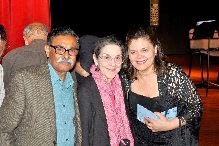 |
| I enjoyed introducing her and Rajan. |
 |
She was kept pretty
busy with autographs. |
You can go to her website and see her CD's
HERE.
We bought a new CD that we enjoy as much as the first one, and now I wish I had bought more. Each one is unique. The one we bought isn't shown in the Discography section on her website above. But there are many performances by her on YouTube at
this site, so you can get a feel for her singing.
Fado, as I mentioned in my earlier post, is a distinctive art form of Portugal, similar in one sense to American Blues, in that it is emotional and comes from deep in the heart and soul. But Fado has a variety of influences, one of them Moorish, and you can hear that in the warbling minor trills in some of the songs. The word itself means "Fate." Usually the songs are about deep yearning and thwarted dreams. Some of them can have a cheerful beat, but it's a fatalistic cheer, dealing with life's outcomes. It's not depressing, though. It's a response to what life deals you. I'm hooked on Fado, and if I can find another Fado concert, I will. Unfortunately, we will be gone before María do Ceo's next concerts in Galicia, but we will watch her schedule and hope to hear her during our next visit in the fall.
María do Ceo is from Portugal, but she lives in Ourense, Galicia. Her songs are in Portuguese, but her singing is quite popular all over Galicia.
Gallego, or
Galego, or
Galician—all are accepted names for the Galician language—is a sister language to Portuguese, so all her songs are understandable to Galicians. I read recently that Gallego and Portuguese share 85% of vocabulary. Our neighbors, in fact, have told us if we knew Portuguese, we would be able to understand Gallego.
Meanwhile, I hope you will visit her website and enjoy the video site
HERE. I strongly recommend "Lela" and "Negra Sombe". But, really, they are all good.
How about you? Do you have favorite music genre? A favorite singer? Please share.


By: KatherineS,
on 3/6/2014
Blog:
OUPblog
(
Login to Add to MyJacketFlap)
JacketFlap tags:
protests,
personal identity,
austerity,
*Featured,
Business & Economics,
arab spring,
protester,
Science & Medicine,
Occupy Wall Street,
eurozone,
Psychology & Neuroscience,
anti-immigration,
Christian von Scheve,
Collective Emotions,
collective identity,
complex affective processes,
Mikko Salmela,
nationalist,
scheve,
mikko,
salmela,
shankbone,
Books,
emotions,
Politics,
Current Affairs,
Spain,
conservative,
EU,
Greece,
Portugal,
financial crisis,
Add a tag
By Mikko Salmela and Christian von Scheve
Nationalist, conservative, and anti-immigration parties as well as political movements have risen or become stronger all over Europe in the aftermath of EU’s financial crisis and its alleged solution, the politics of austerity. This development has been similar in countries like Greece, Portugal, and Spain where radical cuts to public services such as social security and health care have been implemented as a precondition for the bail out loans arranged by the European Central Bank and International Monetary Fund, and in countries such as Finland, France, and the Netherlands that have contributed to the bailout while struggling with the crisis themselves. Together, the downturn that was initiated by the crisis and its management with austerity politics have created an enormous potential of discontent, despair, and anger among Europeans. These collective emotions have fueled protests against governments held responsible for unpopular decisions.

Protests in Greece after austerity cuts in 2008
However, the financial crisis alone cannot fully explain these developments, since they have also gained momentum in countries like Britain, Denmark, Norway, and Sweden that do not belong to the Eurozone and have not directly participated in the bailout programs. Another unresolved question is why protests channel (once again) through the political right, rather than the left that has benefited from dissatisfaction for the last decades? And how is it that political debate across Europe makes increasing use of stereotypes and populist arguments, fueling nationalist resentments?

A protester with Occupy Wall Street
One way to look at these issues is through the complex affective processes intertwining with personal and collective identities as well as with fundamental social change. A particularly obvious building block consists of fear and insecurity regarding environmental, economic, cultural, or social changes. At the collective level, both are constructed and shaped in discourse with political parties and various interest groups strategically stirring the emotions of millions of citizens. At the individual level, insecurities manifest themselves as fear of not being able to live up to salient social identities and their inherent values, many of which originate from more secure and affluent times, and as shame about this anticipated or actual inability, especially in competitive market societies where responsibility for success and failure is attributed primarily to the individual. Under these conditions, many tend to emotionally distance themselves from the social identities that inflict shame and other negative feelings, instead seeking meaning and self-esteem from those aspects of identity perceived to be stable and immune to transformation, such as nationality, ethnicity, religion, language, and traditional gender roles – many of which are emphasized by populist and nationalist parties.
The urgent need to better understand the various kinds of collective emotions and their psychological and social repercussions is not only evident by looking at the European crisis and the re-emergence of nationalist movements throughout Europe. Across the globe, collective emotions have been at the center of major social movements and political transformations, Occupy Wall Street and the Arab Spring just being two further vivid examples. Unfortunately, our knowledge of the collective emotional processes underlying these developments is yet sparse. This is in part so because the social and behavioral sciences have only recently begun to systematically address collective emotions in both individual and social terms. The relevance of collective emotions in recent political developments both in Europe and around the globe suggests that it is time to expand the “emotional turn” of sciences to these affective phenomena as well.
Christian von Scheve is Assistant Professor of Sociology at Freie Universität Berlin, where he heads the Research Area Sociology of Emotion at the Institute of Sociology. Mikko Salmela is an Academy Research Fellow at the Helsinki Collegium for Advanced Studies and a member of Finnish Center of Excellence in the Philosophy of Social Sciences. Together they are the authors of Collective Emotions published by Oxford University Press.
Subscribe to the OUPblog via email or RSS.
Subscribe to only psychology articles on the OUPblog via email or RSS.
Image credits: (1) Protests in Greece after austerity cuts in 2008. Photo by Joanna. CC-BY-2.0 via Wikimedia Commons. (2) A protester with Occupy Wall Street. Photo by David Shankbone. CC-BY-3.0 via Wikimedia Commons)
The post Collective emotions and the European crisis appeared first on OUPblog.

By: Grant Overstake,
on 7/26/2013
Blog:
(
Login to Add to MyJacketFlap)
JacketFlap tags:
Chile,
Uncategorized,
Canada,
Japan,
Taiwan,
Amazon,
Philippines,
Mexico,
France,
Australia,
India,
Poland,
Germany,
New Zealand,
Pakistan,
Puerto Rico,
Belgium,
Spain,
Slovenia,
United Kingdom,
Finland,
South Africa,
Brazil,
Singapore,
Nicaragua,
Ireland,
Netherlands,
Italy,
Turkey,
Israel,
Switzerland,
Nigeria,
Sweden,
Indonesia,
Mongolia,
Thailand,
Argentina,
Morocco,
Peru,
Jamaica,
Norway,
Egypt,
Indiebound,
Iceland,
Venezuela,
Bahamas,
Denmark,
Greece,
United States,
Portugal,
Czech Republic,
Colombia,
Romania,
Croatia,
Saudi Arabia,
Hong Kong,
Ukraine,
Jordan,
Yemen,
Algeria,
Hungary,
Bermuda,
Ecuador,
Bulgaria,
Estonia,
Tunisia,
Trinidad and Tobago,
Girls Sports,
Bahrain,
Lithuania,
Namibia,
United Arab Emirates,
Grant Overstake,
Inspirational Sports Stories,
Maggie Vaults Over the Moon,
young adult sports,
KSHSAA,
Pole Vault Fiction,
Track and Field Stories,
sports novels,
Recommended sports books for teens,
Watermark Books and Cafe,
Kansas State High School Activities Association Journal,
Austria Botswana,
Insirational Sports Books,
Isle of Man,
Republic of Korea,
Russian Federation,
Add a tag
Maggie Steele, the storybook heroine who vaults over the moon, has been attracting thousands of visitors from around the world. So many visitors, in fact, that she’s using a time zone map to keep track of them all.* People are … Continue reading →
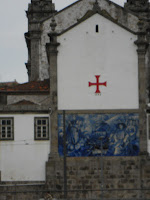 |
| A city of cathedrals |
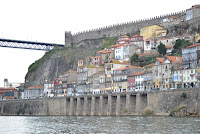 |
| Porto from the river. |
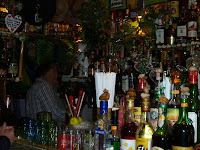 |
| An amazing wine shop/bar. |
It's time for Portugal again. Our dog has improved. My godfather's health is improving. And now I'm ready to return to O Porto. albeit only in memory and in pictures.
For those of you who lost the thread of that journey, on our fall trip to Galicia my husband and I went with friends Terri and David to the old city of Porto, for three days and two nights. Porto is like an aging beauty queen: Despite the make-up and glittery clothing of main streets and the wharf side cafes and shops, you can see the "wrinkles" on back streets. But Porto has an air of grandeur, of lost days of glory still sparkling on tiled walls and statues, on the gleaming waters of the Rio Douro where boats bob on rippling water and reflections of colorful buildings on the far bank shimmer below on the wet surface. Just writing about it brings it all back. You can see why: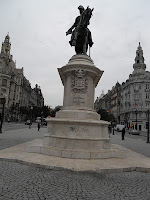 |
| A city of statues. |
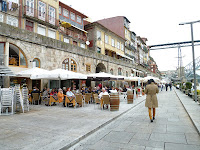 |
| The wharf-side |
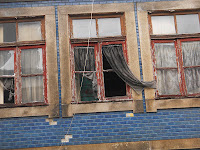 |
| A back street. |
 |
| The far bank. |
You can scroll back to read the earlier post about our first day there and where we stayed. And also the fabulous restaurant where we ate: O u (which means "the oven"). Also, in the earlier post you can see the lovely tile work of our hotel and the wonderful garden grounds.
The second morning, when we headed out to sightsee, we noticed a school across the street, and several young girls were crowded at the window, waving at us. Then the teacher must have told them to sit down, because a moment after the picture below, they all vanished.
On our way to the wharf, we passed the wine shop you see above, at the beginning of this post, and again below. The owner is from Brazil. The shop was absolutely tiny, with a small bar that would seat four at most, and the shelves were lined with every kind of bottle of wine you could imagine. We stopped by on the way back and enjoyed a glass of port. I am not really a port drinker, but it was good to try. After all, Portugal is the inventor of port.
 |
| Rajan photographing the wineshop. |
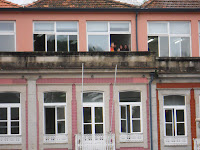 |
| School of curious girls. |
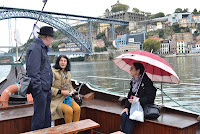 |
| On our way up the river. |
Once we got to the wharf, we could not resist the call of the river. So we boarded a boat for an hour-long river cruise.
And what wonderful sights we did see! Below are just a few samples.
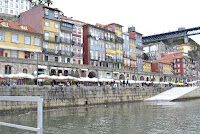 |
| Leaving the wharf. |
 |
| I love the woods behind buildings. |
 |
| A hidden castle in those woods. |
 |
| So much color! |
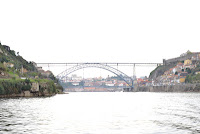 |
| Awesome bridge for sure. |
For every one of these, we have oodles more. It was a splendid sight up and down the river.
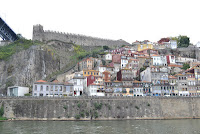 |
| A truly grand view. |
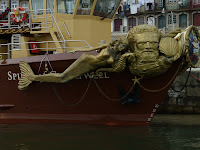
Two rather interesting boats, we thought.
With the wind rippling against our faces and the smell of freshness surrounding us, once we returned to land, we were hungry. So we ate at a charming little restaurant with great atmosphere at the wharf—its name eludes me, alas.
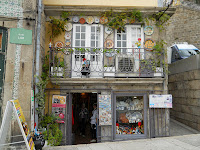 |
| The restaurant. |
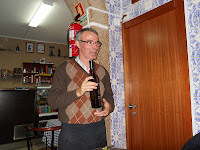 |
| Our server. |
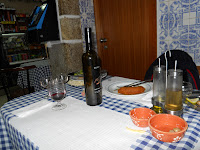 |
| The atmosphere. |
And then we walked around the city some more, before going home. Later, of course, we ventured out to eat a late supper. And then the next morning we left so that we would have time to stop in the city of Tui on the Spanish side of the Rio Minho (Portuguese) or Rio Miño (Spanish). Tui, in Spain, is an old castle town with a huge cathedral, and is across the river from Valença, and old fortress town in Portugal, and that will have to be for another day.
Meanwhile, I hope you enjoyed this little (and limited) trip to Portugal.

By: KimberlyH,
on 2/23/2013
Blog:
OUPblog
(
Login to Add to MyJacketFlap)
JacketFlap tags:
Religion,
France,
oupblog,
Spain,
italy,
pope,
Europe,
catholic church,
catholic,
Portugal,
vatican,
correspondence,
Humanities,
*Featured,
oxford university,
papacy,
Bodleian Library,
Online Products,
Horace Walpole,
Benedict XIV,
Cardinal d’Auvergne,
Clement XII,
Conclave,
Dr. Robert V. McNamee,
Electronic Enlightenment,
grand tour,
papal election,
Thomas Gray,
travel,
History,
Add a tag
By Dr. Robert V. McNamee
On Sunday, 29 March 1739, two young men, aspiring authors and student friends from Eton College and Cambridge, departed Dover for the Continent. The twenty-two year old Horace Walpole, 4th earl of Orford (1717–1797), was setting out on his turn at the Grand Tour. Accompanying him on the journey, which would take them through France to Italy, was Thomas Gray (1716–1771), future author of the “Elegy Written in a Country Churchyard”. The pair stayed abroad until September 1741, when an argument saw Gray return to England alone.
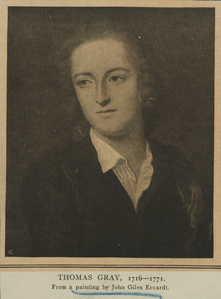 Travelling through Catholic domains, they would witness at arms-length one of the longest transfers of papal power in history, only four days shorter than the Interregnum, later imposed by the Napoleonic French, between the expulsion from the Papal States of Pius VI (who died 1799) and the election of Pius VII (14 March 1800). The on-going power struggle between the papacy and Catholic rulers of Europe, particularly with France, Spain and Portugal, had reached new levels of intensity — the latter two objecting in particular to unwelcome Jesuit interference in their treatment (read, “mistreatment”) of native populations in their overseas empires. The issue was still critical twenty years later, when Voltaire, under the pseudonym M. Demand, wrote to the Journal encyclopédique (1 April 1759), in the guise of identifying the real author of Candide, offering in partial evidence reports from the confrontations between Jesuits and colonial officials over their dealings with native populations in Paraguay.
Travelling through Catholic domains, they would witness at arms-length one of the longest transfers of papal power in history, only four days shorter than the Interregnum, later imposed by the Napoleonic French, between the expulsion from the Papal States of Pius VI (who died 1799) and the election of Pius VII (14 March 1800). The on-going power struggle between the papacy and Catholic rulers of Europe, particularly with France, Spain and Portugal, had reached new levels of intensity — the latter two objecting in particular to unwelcome Jesuit interference in their treatment (read, “mistreatment”) of native populations in their overseas empires. The issue was still critical twenty years later, when Voltaire, under the pseudonym M. Demand, wrote to the Journal encyclopédique (1 April 1759), in the guise of identifying the real author of Candide, offering in partial evidence reports from the confrontations between Jesuits and colonial officials over their dealings with native populations in Paraguay.
The correspondence and journals of Gray and Walpole chart their travels, visits and discoveries across France and into Italy. The two young English travellers arrived in Florence on 16 December 1739, after a two days’ journey from Bologna across the Apennines. It was only two months before the ancient drama of papal passing and election would attract the attention of the world. Gray reported this news, when it came, to his friend Dr Thomas Wharton, writing on Saturday, 12 March 1740:
I conclude you will write to me; won’t you? oh! yes, when you know, that in a week I set out for Rome, & that the Pope is dead, & that I shall be (I should say, God willing; & if nothing extraordinary intervene; & if I’m alive, & well; & in all human probability) at the Coronation of a new one.
Clement XII (Papa Clemens duodecimus, born Lorenzo Corsini) had been pope from his election on 12 July 1730. He was the oldest person to become pope until Benedict XVI was elected in 2005. Clement died on 6 February 1740, and was eventually succeeded by Benedict XIV (Papa Benedictus quartus decimus, born Pròspero Lorenzo Lambertini), who was elected six months later on 17 August 1740. In a well-known anecdote of the election, Benedict is reported to have said to the cardinals: “If you wish to elect a saint, choose Gotti; a statesman, Aldrovandi; an honest man, me” (M. J. Walsh, Pocket Dictionary of Popes, London: Burns & Oates, 2006) — though as we will see from a contemporary report below, this is a rather colourless translation of the original.
A week later, Gray wrote to his mother Dorothy (Saturday, 19 March 1740):
The Pope is at last dead, and we are to set out for Rome on Monday next. The Conclave is still sitting there, and likely to continue so some time longer, as the two French Cardinals are but just arrived, and the German ones are still expected. It agrees mighty ill with those that remain inclosed: Ottoboni is already dead of an apoplexy; Altieri and several others are said to be dying, or very bad: Yet it is not expected to break up till after Easter. We shall lie at Sienna the first night, spend a day there, and in two more get to Rome. One begins to see in this country the first promises of an Italian spring, clear unclouded skies, and warm suns, such as are not often felt in England; yet, for your sake, I hope at present you have your proportion of them, and that all your frosts, and snows, and short-breaths are, by this time, utterly vanished. I have nothing new or particular to inform you of; and, if you see things at home go on much in their old course, you must not imagine them more various abroad. The diversions of a Florentine Lent are composed of a sermon in the morning, full of hell and the devil; a dinner at noon, full of fish and meager diet; and, in the evening, what is called a Conversazione, a sort of aſsembly at the principal people’s houses, full of I cannot tell what: Besides this, there is twice a week a very grand concert.
Two weeks later, after their arrival in Rome, Gray wrote another Saturday letter to his mother (2 April 1740):
St. Peter’s I saw the day after we arrived, and was struck dumb with wonder. I there saw the Cardinal d’Auvergne, one of the French ones, who, upon coming off his journey, immediately repaired hither to offer up his vows at the high altar, and went directly into the Conclave; the doors of which we saw opened to him, and all the other immured Cardinals came thither to receive him. Upon his entrance they were closed again directly. It is supposed they will not come to an agreement about a Pope till after Easter, though the confinement is very disagreeable.”
The conflict between catholic rulers, their national churches and the papacy led to prolonged disagreements and manoeuvrings in the Conclave, as evidenced by this letter from Walpole and Gray to their schoolboy friend, then fellow of King’s College Cambridge (Rome, 14 May 1740):
Boileau’s Discord dwelt in a College of Monks. At present the Lady is in the Conclave. Cardinal Corsini has been interrogated about certain Millions of Crowns that are absent from the Apostolic Chamber; He refuses giving Account, but to a Pope: However he has set several Arithmeticians to work, to compose Summs, & flourish out Expenses, which probably never existed. Cardinal Cibo pretends to have a Banker at Genoa, who will prove that he has received three Millions on the Part of the Eminent Corsini. This Cibo is a madman, but set on by others. He had formerly some great office in the government, from whence they are generally rais’d to the Cardinalate. After a time, not being promoted as he expected, he resign’d his Post, and retir’d to a Mountain where He built a most magnificient Hermitage. There He inhabited for two years, grew tir’d, came back and received the Hat.
Other feuds have been between Card. Portia and the Faction of Benedict the Thirteenth, by whom He was made Cardinal. About a month ago, he was within three Votes of being Pope. he did not apply to any Party, but went gleaning privately from all & of a sudden burst out with a Number; but too soon, & that threw Him quite out. Having been since left out of their Meetings, he ask’d one of the Benedictine Cardinals the reason; who replied, that he never had been their Friend, & never should be of their assemblies; & did not even hesitate to call him Apostate. This flung Portia into such a Rage that He spit blood, & instantly left the Conclave with all his Baggage. But the great Cause of their Antipathy to Him, was His having been one of the Four, that voted for putting Coscia to Death; Who now regains his Interest, & may prove somewhat disagreable to his Enemies; Whose Honesty is not abundantly heavier than His Own. He met Corsini t’other Day, & told Him, He heard His Eminence had a mind to his Cell: Corsini answer’d He was very well contented with that He had. Oh, says Coscia, I don’t mean here in the Conclave; but in the Castle St. Angelo.
With all these Animosities, One is near having a Pope. Card. Gotti, an Old, inoffensive Dominican, without any Relations, wanted yesterday but two voices; & is still most likely to succeed. Card. Altieri has been sent for from Albano, whither he was retir’d upon account of his Brother’s Death, & his own Illness; & where He was to stay till the Election drew nigh. There! there’s a sufficient Competency of Conclave News, I think. We have miserable Weather for the Season; Coud You think I was writing to You by my fireside at Rome in the middle of May? the Common People say tis occasion’d by the Pope’s Soul, which cannot find Rest.
As the bickering and accusations continued, Gray returned to Florence, where he reported to his father Philip (10 July 1740):
The Conclave we left in greater uncertainty than ever; the more than ordinary liberty they enjoy there, and the unusual coolneſs of the season, makes the confinement leſs disagreeable to them than common, and, consequently, maintains them in their irresolution. There have been very high words, one or two (it is said) have come even to blows; two more are dead within this last month, Cenci and Portia; the latter died distracted; and we left another (Altieri) at the extremity: Yet nobody dreams of an election till the latter end of September. All this gives great scandal to all good catholics, and everybody talks very freely on the subject.
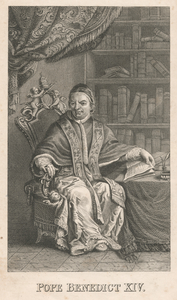 Finally, on Sunday, 21 August 1740, Gray wrote again to his mother with the news of the new pope’s election:
Finally, on Sunday, 21 August 1740, Gray wrote again to his mother with the news of the new pope’s election:
The day before yesterday arrived the news of a Pope; and I have the mortification of being within four days journey of Rome, and not seeing his coronation, the heats being violent, and the infectious air now at its height. We had an instance, the other day, that it is not only fancy. Two country fellows, strong men, and used to the country about Rome, having occasion to come from thence hither, and travelling on foot, as common with them, one died suddenly on the road; the other got hither, but extremely weak, and in a manner stupid; he was carried to the hospital, but died in two days. So, between fear and lazineſs, we remain here, and must be satisfied with the accounts other people give us of the matter. The new Pope is called Benedict XIV. being created Cardinal by Benedict XIII. the last Pope but one. His name is Lambertini, a noble Bolognese, and Archbishop of that city. When I was first there, I remember to have seen him two or three times; he is a short, fat man, about sixty-five years of age, of a hearty, merry countenance, and likely to live some years. He bears a good character for generosity, affability, and other virtues; and, they say, wants neither knowledge nor capacity. The worst side of him is, that he has a nephew or two; besides a certain young favourite, called Melara, who is said to have had, for some time, the arbitrary disposal of his purse and family. He is reported to have made a little speech to the Cardinals in the Conclave, while they were undetermined about an election, as follows: ‘Most eminent Lords, here are three Bolognese of different characters, but all equally proper for the Popedom. If it be your pleasures, to pitch upon a Saint, there is Cardinal Gotti; if upon a Politician, there is Aldrovandi; if upon a Booby, here am I.’ The Italian is much more expreſsive, and, indeed, not to be translated; wherefore, if you meet with any body that understands it, you may show them what he said in the language he spoke it. ‘Eminſsimi. Sigri. Ci siamo tré, diversi sì, mà tutti idonei al Papato. Si vi piace un Santo, c’ è l’Gotti; se volete una testa scaltra, e Politica, c’ è l’Aldrovandé;c se un Coglione, eccomi!’ Cardinal Coscia is restored to his liberty, and, it is said, will be to all his benefices. Corsini (the late Pope’s nephew) as he has had no hand in this election, it is hoped, will be called to account for all his villanous practices.”
Dr. Robert V. McNamee is the Director of the Electronic Enlightenment Project, Bodleian Libraries, University of Oxford.
Electronic Enlightenment is a scholarly research project of the Bodleian Libraries, University of Oxford, and is available exclusively from Oxford University Press. It is the most wide-ranging online collection of edited correspondence of the early modern period, linking people across Europe, the Americas, and Asia from the early 17th to the mid-19th century — reconstructing one of the world’s great historical “conversations”.
Subscribe to the OUPblog via email or RSS.
Subscribe to only religion articles on the OUPblog via email or RSS.
Image Credit: (1) Print Collection portrait file, Thomas Gray, Portraits. Source NYPL Digital Gallery
(2) Print Collection portrait file, B, Pope Benedict XIV. Source NYPL Digital Gallery
The post Thomas Gray and Horace Walpole on the grand tour to spread news of a papal election, 1739/1740 appeared first on OUPblog.


By: Alice,
on 3/16/2012
Blog:
OUPblog
(
Login to Add to MyJacketFlap)
JacketFlap tags:
This Day in History,
*Featured,
Philippines,
World,
sailing,
Portugal,
South America,
Spice Islands,
Ferdinand Magellan,
higher education,
expedition,
this day in world history,
circumnavigate,
navigator,
magellan,
1521,
scurvy,
archipelago,
History,
Add a tag
This Day in World History
March 16, 1521
Magellan Reaches the Philippines
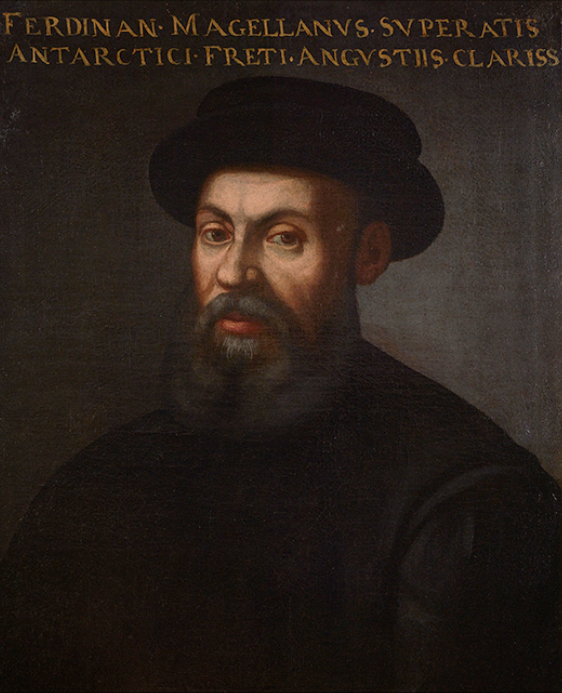 On March 16, 1521, Portuguese navigator Ferdinand Magellan, attempting to sail around the world for Spain, reached the Philippine archipelago. Magellan and his expedition were the first Europeans to reach the Philippines, a stop on the first circumnavigation of the globe, though Magellan’s portion of that journey would soon end.
On March 16, 1521, Portuguese navigator Ferdinand Magellan, attempting to sail around the world for Spain, reached the Philippine archipelago. Magellan and his expedition were the first Europeans to reach the Philippines, a stop on the first circumnavigation of the globe, though Magellan’s portion of that journey would soon end.
The expedition of five ships and 250 men had left Spain on September 20, 1519. Magellan sought a western route — avoiding the southern tip of Africa, which Portugal controlled — to the Spice Islands (the Moluccas) of Southeast Asia. Magellan survived two mutinies before sailing around the southern tip of South America, finding the strait named for him, in November of 1520. Reaching calm waters after a dangerous passage, Magellan named the ocean west of South America “the Pacific Ocean.”
As the ships continued sailing west, supplies dwindled, the crew was forced to eat leather and drink a mixture of salt and freshwater, and men began dying of scurvy. Fortified by provisions secured at island stops along the way, the ships reached the Philippines in March 1521.
Magellan spent more than a month in the area, trading with local leaders and trying to convert them to Christianity. He grew angry at one chief who refused to cooperate, however, and ordered an attack on his village. Wounded in the fighting, Magellan bravely held his ground while the rest of his men escaped back to the ship, but then received more wounds and died on the beach.
It took until September of 1522 for the remains of the expedition, 17 survivors under the command of Juan Sebastián de Elcano, to reach Spain. Though he did not complete this voyage, Magellan is considered the first person to circumnavigate the globe because earlier in his career he had sailed an eastern route from Portugal to Southeast Asia, the same region he had reached on his last, fatal voyage by sailing west.
“This Day in World History” is brought to you by USA Higher Education.
You can subscribe to these posts via RSS or receive them by email.

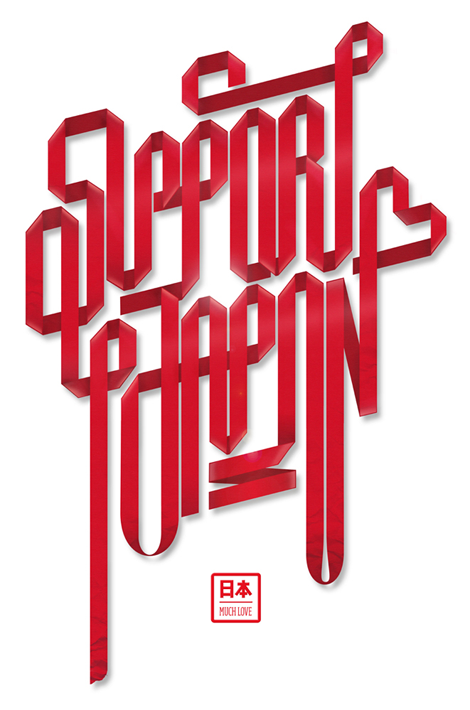
André Beato is an incredibly talented typographer from Portugal that I came across lately. The thing that strikes me most about his work is the fact that he creates unique minimalistic compositions while maintaining interesting & intricate typographic forms. The balance that he has found in creating his projects is quite inspiring. Check out the rest of his site and don’t forget to download the great iPhone wallpaper that he made to support Japan relief efforts.
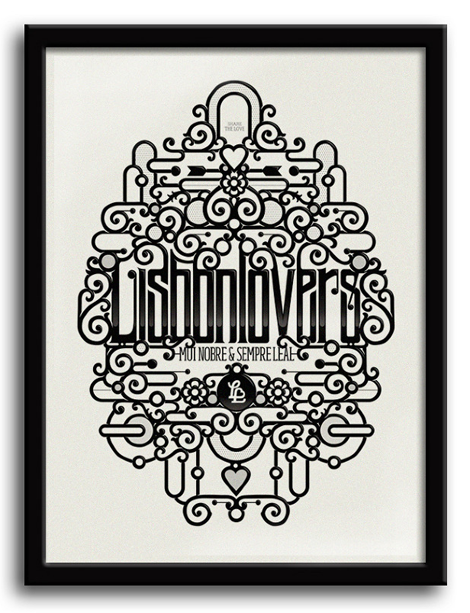
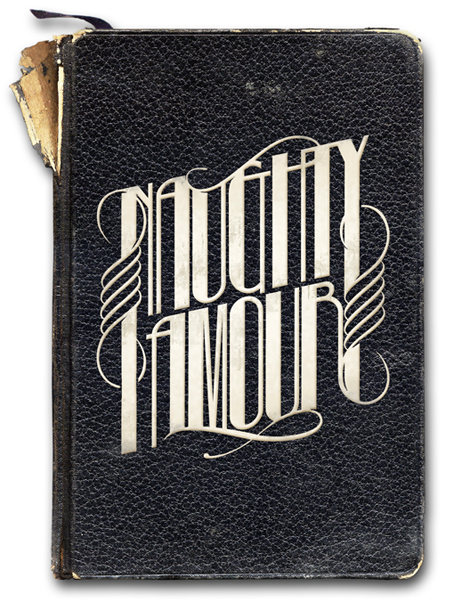
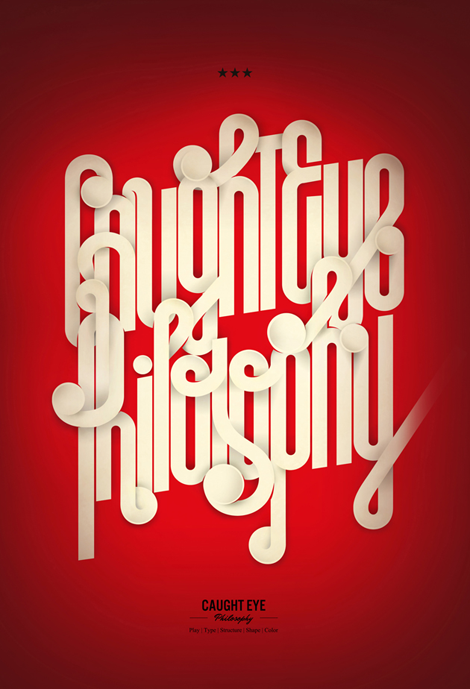





——————–
Also worth viewing:
Michael Doret
Jeremy Pettis
Jonathan Zawada
Not signed up for the
Grain Edit RSS Feed yet? Give it a try. Its free and yummy.
——————–
No Tags
Share This
Grain Edit recommends: Karel Martens: Printed Matter. Check it out here.
©2009 Grain Edit - catch us on Facebook and
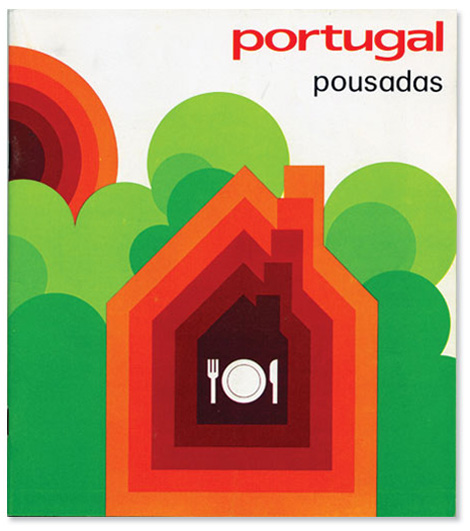
Beautiful brochure for a chain of hotels in Portugal.
From the inside of the brochure: “From the oldest times, “pousada” in Portuguese has meant “resting place”"inn”. Quiet isolated situations by the sea shore, in the mountains or on the plains. Lovely views, wealth of history, traditional culture.
The Pousadas make up a network of hotel establishments built by the state, housed in historic buildings, castles, palaces, and monasteries or specially built.”
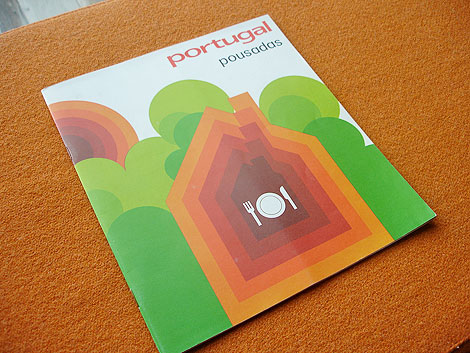
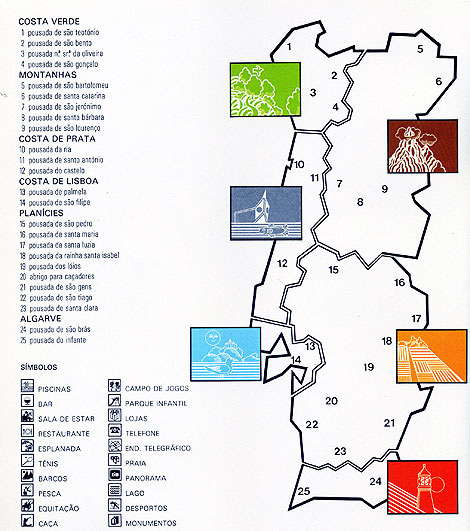
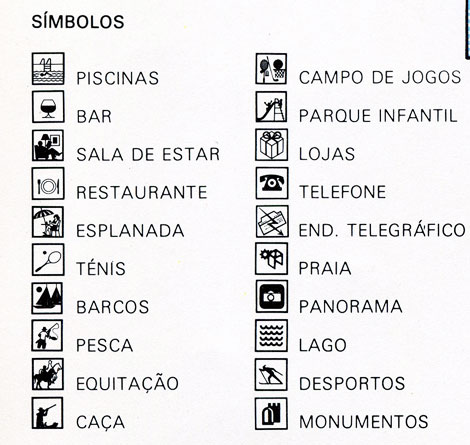
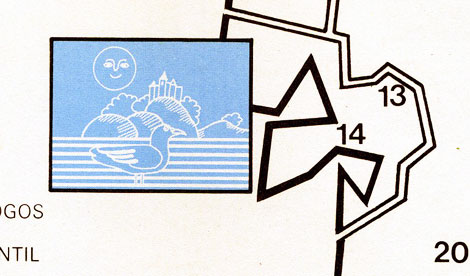
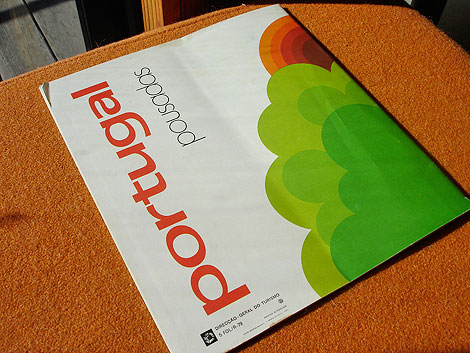
——————–
Also worth checking: Portugal 1981 Census Stamps.
Not signed up for the Grain Edit RSS Feed yet? Give it a try. Its free and yummy.
——————–
No Tags
Share This
Congrats to B. Rane! She is the winner in the Photo-Lettering giveaway.
Grain Edit recommended reading: A Russian Diary
©2009 Grain Edit - catch us on Facebook and twitter

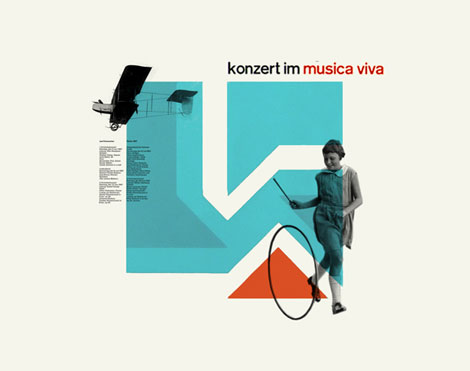
Beautiful collage work from Lisbon based designer Cristiana Couceiro. As Steve Mehallo puts it, “When one thinks of collage, it’s usually something . . . scrapbooky. Not always the case.”
In a recent issue of Moloko, she talked about gathering source material. “On Saturdays I like to go through the flea market collecting memories. Feira da Ladra as we call it here in Lisbon. That means Thief Fair, which is funny collecting other people’s memory to build a new one”. Her source material comes from a variety of modern sources including: record covers, Canadian logos, 1960s paperback books, Latvian magazines, Swiss posters, as well as work from the Bauhaus.


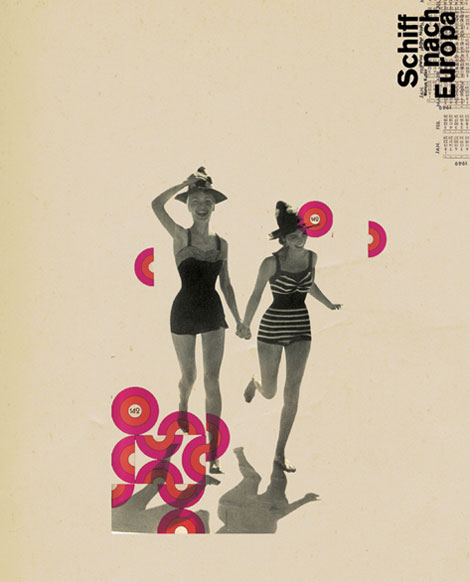
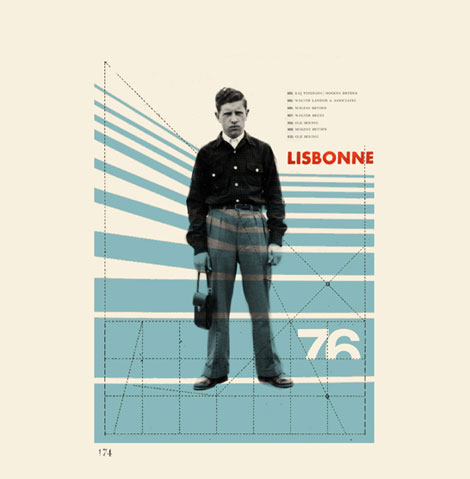
——————
Also worth checking: Swiss Graphic Design By Geigy. & Hans Hartmann.
Not signed up for the Grain Edit RSS Feed yet? Give it a try. Its free and yummy.
——————
No Tags
Share This
Grain Edit recommended reading: IDEA magazine - The Max Huber issue
©2009 Grain Edit - catch us on Facebook and twitter

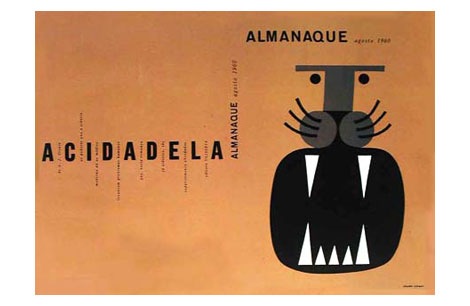
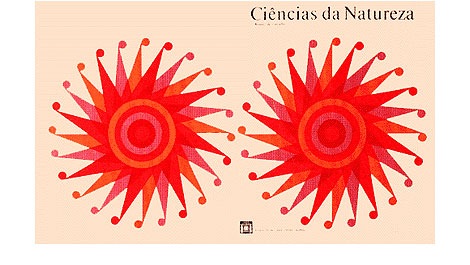
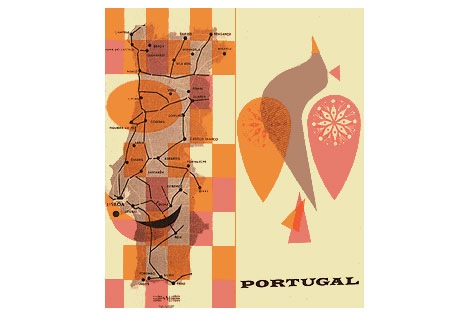
above: Ciências da Natureza book cover (1972), Almanaque magazine august 1960, material for the Secretariado Nacional da Informação - Portugal
Beautiful work by Portuguese designer Sebastio Rodrigues (1929- 1997)
You can see a video of Sebastiao in action here.
I’d love to know more about Sebastiao Rodrigues, so if you have any info please let me know in the comments.
Also worth checking:
Maria Keil : Infante Santo mural
(via nitro design, tipografico)
No Tags
Share This
©2007 -Visit us at Grain Edit.com for more goodies. 





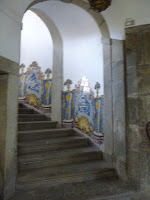


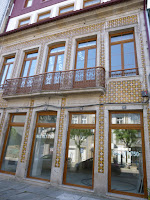


































![]()


 On March 16, 1521, Portuguese navigator Ferdinand Magellan, attempting to sail around the world for Spain, reached the Philippine archipelago. Magellan and his expedition were the first Europeans to reach the Philippines, a stop on the first circumnavigation of the globe, though Magellan’s portion of that journey would soon end.
On March 16, 1521, Portuguese navigator Ferdinand Magellan, attempting to sail around the world for Spain, reached the Philippine archipelago. Magellan and his expedition were the first Europeans to reach the Philippines, a stop on the first circumnavigation of the globe, though Magellan’s portion of that journey would soon end.


I enjoyed it a lot! Glad your dog is better and your godfather's health is improving :)
Thanks, Catherine!
I love traveling with you to places I've never been. Someday... Thanks for the journey, Mitty. It was lovely.
Lovely pictures, Elizabeth. Glad your dog is better.
The photos are beautiful, Elizabeth--and your "tour" is a delightful journey. You always take me to places I'd have never laid eyes upon. Thank you. :-)
Beautiful pictures! I am glad to know that your loved ones are better. Hugs.
Rosi, I'm glad you liked the journey. I know you love Europe.
Rachna, thanks for the good wishes for Cezar. He's better, but he still wobbles when he walks. I think his balance problem is probably permanent. Glad you liked the pictures.
Teresa, glad you like the pictures. Your beautiful photographs affect me the same way. Especially the recent one of the moon shining through bare branches. Stunning!
Julia, glad you enjoyed the pictures. And thanks for the thoughts about my dog and my godfather.
What lovely photographs, my artist husband would be drooling if he saw these! You have a wonderful way of sharing your travels, Elizabeth. Thanks! (Oh, I'm so glad your dog is feeling better!)
I'm so glad to hear about the improvement for your dog and your godfather!
These are lovely. It's amazing to see the houses going straight back from the riverside.
Shannon, visiting from Writing From the Peak